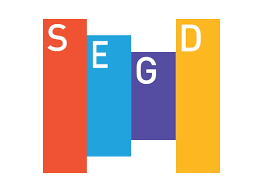ARCHIVE: Category Archive for: Wayfinding
Developing wayfinding systems in museums
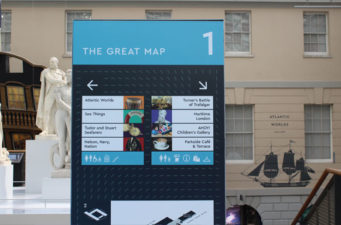
Good museum wayfinding is essential for thepublic to get the most out of a visit to your museum. in this article we look at best practice for museum wayfinding, from signage to
Hanging Signs Isn’t Always a Straightforward Task

You’d think a parking garage would be a fairly cut and dry project, with color-coded signs for each level, arrows to direct traffic flow, ADA signage, elevator occupancy signs, and indications pointing out stairwells, right? Well, like the posted 5 mph speed limit, not so fast. A lot more planning and coordination goes into designing, manufacturing, and installing signs for a parking deck than it first appears. Metro began work on the Hamilton Canal Innovation District Parking Structure in collaboration with general contractor Shawmut Design and Construction of Boston, MA. In addition to providing signage for the brand new parking structure, future plans for this project include creating and installing signs for the office building yet to come. Collaboration and
Where is my car? Examining wayfinding behavior in a parking lot
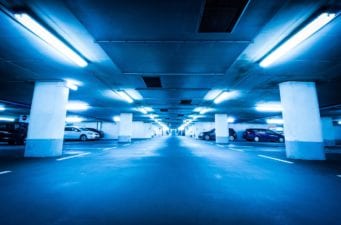
Shopping malls are one of the most ubiquitous spaces of modern capitalist cities. It is calculated that in the United States alone, more than 2,000 shopping malls exist, accounting for nearly 75% of all non-automotive sales in this country. You’d think that navigating a parking lot doesn’t require an advanced degree, right? And yet many parking areas — whether lots, decks, or garages — lack clearly legible signs, have few entrances to help people orient, and generally complicate a driver’s ability to navigate. A study of a parking lot owned by one of the latest shopping malls in Santiago, Chile, mapped and analyzed the trajectories of about 500 people. The study concluded that despite their apparent simplicity, parking lots aren’t
Optimizing Higher Education Signage with Metro Sign & Awning
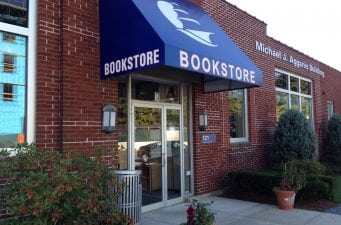
No one likes to get lost! And one of the best ways an institution can help people find their way or get important information quickly and clearly is to employ signage. In fact, signage offers a good tool for higher education settings. Freestanding signs with electronic message center displays (EMC) distribute daily and emergency information efficiently, and wayfinding signs help people navigate campus more easily. Interior signs can reinforce learning by supporting multimedia for lectures or enhance the interdepartmental recognition of student accomplishments by enabling departments to promote their students’ successes. And consistent signage supports both an institution’s branding and elevates its school spirit. Metro Sign has worked with a variety of colleges and universities right here in the heart
Keeping Pedestrians Safe at Fitchburg State – Higher Education Series Post 1
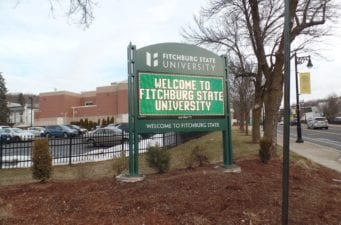
One of the colleges with whom Metro Sign has worked is Fitchburg State — a client for over three years. Some of the college’s first projects included adding need-based interior photopolymer Americans with Disabilities Act (ADA) signs. This initial opportunity led to additional signage projects including wayfinding, monument signs, directories, building identification, and award displays. One important job included the addition of flashing pedestrian signs at crosswalks. College administrators worried that vehicles failed to slow down when students and faculty entered the crosswalks, which could cause a hazardous situation. To keep both vehicle and foot traffic safe, Metro Sign installed environmentally-friendly new pedestrian signs with flashers activated by the press of a button. These solar-powered lights flash visibly to vehicles
No Signage Project Too Big at Suffolk University – Higher Education Series Post 3
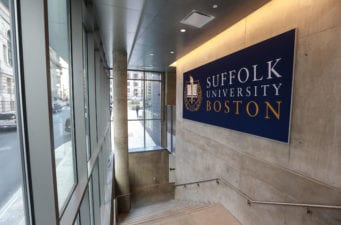
Suffolk University might also share UMass Boston’s philosophy: Go big, or go home. Although Suffolk wasn’t working on a Renovations to Existing Academic Buildings (REAB) project when they called Metro Sign, they did have an unusual project in mind. Among its requirements for new architectural signage, the university wanted to add a 21 panel, 20-foot high wall mural. This high-pressure laminate (HDP) exterior wall mural required considerable engineering expertise and clear communication and coordination to ensure the seal on the curtain wall and panels would fit into the Z-Clip system. Have you ever arrived at a new location and you’re not quite sure where to go? Or you look at the map — often a freestanding sign — and it
Building Relationships at Salem State University – Higher Education Series Post 4
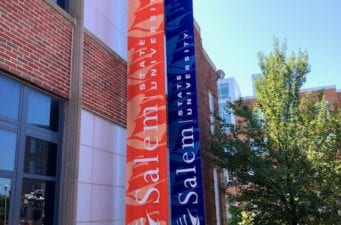
Some partnerships are made to last — and such is the case with the relationship between Metro and Salem State University, a client since 2003. Over the years, we’ve updated or added just about all the college’s campus and Americans with Disabilities Act (ADA) signage. From monument signs and flag banners to wayfinding signs, building identification, directory signs, and pretty much everything in between, we’ve made sure that everything we create fits Salem’s brand. Working in tandem with Salem’s marketing and facilities people on a series of projects over the past 17 years has allowed us to develop the partnership. It’s Metro Sign’s responsiveness and the quality of signs we make that make us the go-to choice for the university.
Tips for Signage and Wayfinding in a Post-COVID-19 World
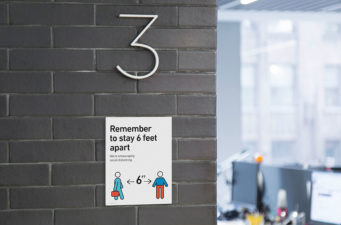
Signage and wayfinding graphics can introduce healthy practices and help people feel at ease in this time of uncertainty.
5 Types of Signage No Retailer Can Afford to Ignore
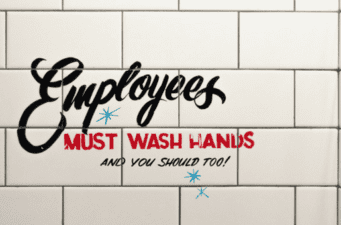
Quality signage is an easy and effective way to drive foot traffic and communicate with your customers when designing your store. However, if done incorrectly, signage can cause overstimulation and even confusion. Signage at your place of business is just as important as your website design and shouldn’t be an afterthought.
Intuitive Wayfinding Design Unveiled at Children’s Hospital
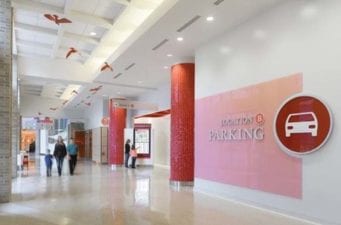
Browning says one of the most compelling aspects of the project was recognizing that the previous concourse was adding stress to users’ experiences. “We definitely improved the intuitiveness and added a calming sense,” he says. Furthermore, he says the project’s architectural language will be used when the main concourse is extended to connect to the new critical care building. In fact, designers have already started developing the addition’s wayfinding cues, starting with its animal character: a giraffe.
Categories
- ADA
- Architectural Signage
- Awnings and Canopies
- Branding
- Colleges and Universities
- Community
- COVID-19
- Curated Content
- Customer Spotlight
- Customers
- Deep
- Design/Build
- Digest
- Digital Signage
- Eco-Signage
- Electronic Message Centers (EMC)
- Enclosures
- Exterior Signage
- Fabrication
- Freestanding Signs
- Fun
- Functional Signage
- Green
- How Much Does a Sign Cost
- Industries
- Inside Metro
- Interior Signage
- Legacy
- Legacy-EA 2.0
- Metro Sign
- Metro Sign & Awning
- New England Signs
- Newsletters
- Original Posts
- Others
- Partners-Developers-Contractors
- Professional Signage Installation
- Publications
- Residential Signage
- Sign Design
- Sign Renovation
- Sign Types
- Sign Warranty
- Signage Regulations
- Signage ROI
- Signage Tips
- Vehicle Wrap
- Wayfinding
- Window and Door Graphics
Recent Posts
Tags
Copyright 2022 MetroSign and Awning, All rights reserved | Privacy Statement | Terms of Use
